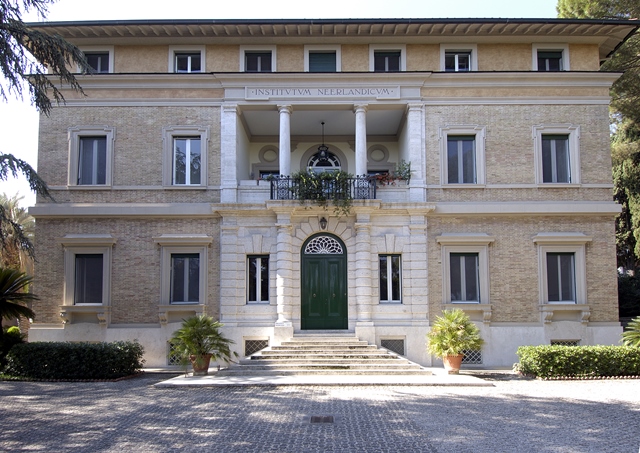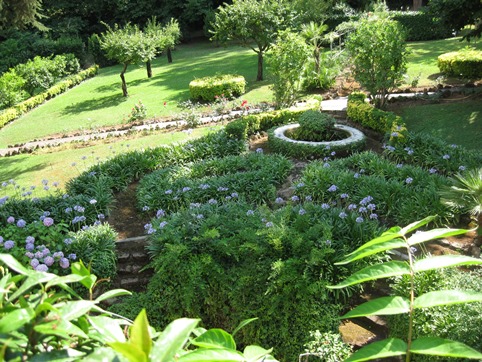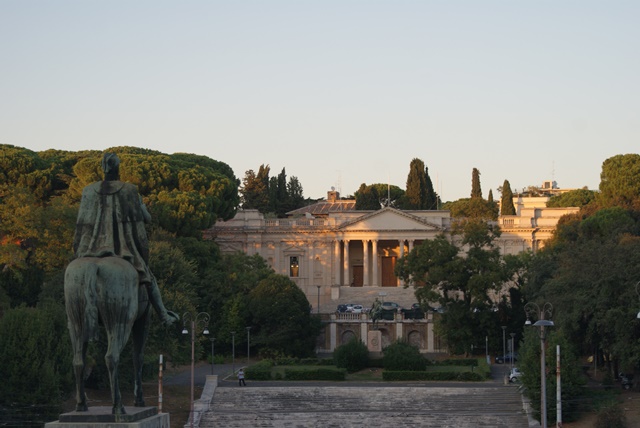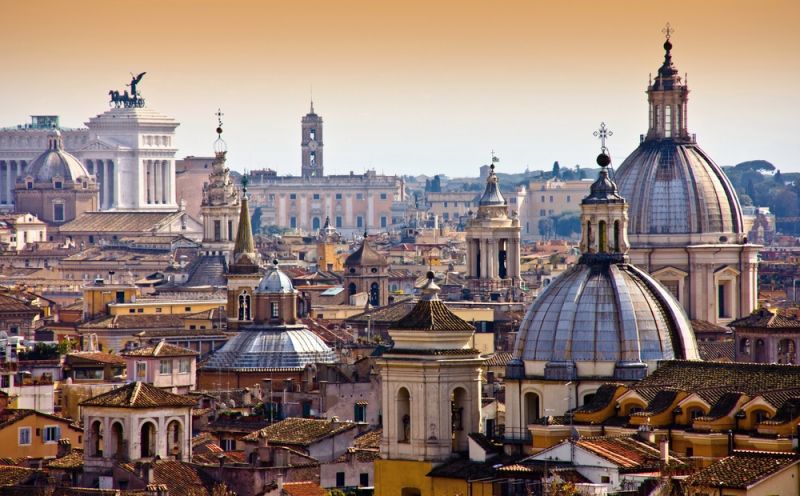For more than a hundred years, the KNIR has been synonymous with quality research and education in Rome.
The Institute was founded in 1904. The main objective at that time was to study the Vatican archives that had just been opened up. These provided an unparalleled source of information on the cultural, political and religious history of the Netherlands in an international context. The KNIR soon expanded its area of activity to other fields of research, in particular the art history, ancient studies and archaeology of Italy and the Mediterranean.
Since 1933, the Institute has had its own building, designed by Italian engineer Gino Cipriani and The Hague architect Jan Stuyt. The building is located in the Valle Giulia, an area which was allocated for various international institutions during the fascist regime. It was opened on 29 April 1933 in the presence of Benito Mussolini.
After the Second World War, the KNIR played an important role in the renewal of the scientific and cultural ties between the Netherlands and Italy. Since the early 1990s, the Institute has focused primarily on the academic world.
On its 100th birthday, the NIR was awarded the title ‘Royal’. Since then, the institute has attracted a growing number of students, scholarships, courses, interdisciplinary research projects, congresses, presentations and debates.
The history of the first hundred years of the Institute is described in detail by Hans Cools and Hans de Valk, in Institutum Neerlandicum MCMIV-MMIV (Hilversum: Publishing company Verloren, 2004).
Building
The KNIR is housed in a stately, neo-renaissance villa on Via Omero, on the outskirts of the Roman city park Villa Borghese.
The large library and the office spaces are situated on the ground floor.
On the first floor, there are rooms for education, lectures, symposia or cultural events. The mini-apartment and the director’s apartment can also be found here.
The basement offers space for course groups.
The second floor is entirely set up as a guest wing for students, with ten rooms and spacious common facilities.


Garden
One of our ‘hidden’ treasures is the garden, which borders at the Villa Borghese. The design is a free interpretation of classical sixteenth- and seventeenth-century garden architecture. Due to the difference in level between the villa and the garden, it is in fact an upper garden consisting of lawns quite loosely planted with fruit trees, magnolias, shrubs, hedges and a rose pergola.
From the Institute, the garden can be seen clearly from the balcony on the first floor, where the shapes of the formal parterres, which are planted with agapanthus and boxwood, become visible. The whole place is reminiscent of the type of garden that has been referred to as giardino segreto since the Renaissance.
The garden is freely accessible to KNIR visitors and offers, in accordance with Greek and Roman traditions, an open-air place for contemplation and discussion.
Valle Giulia
The KNIR is located on the outskirts of the city park Villa Borghese in the Valle Giulia. This valley has been a cultural centre of modern Rome for over a century. Two of the city’s main museums, the Museo Nazionale Etrusco di Villa Giulia and the Galleria Nazionale d ‘Arte Moderna, are located in the valley, within walking distance of the KNIR.
Other international institutes and academies have found their home as our neighbours: across the valley, the Austrian Institute, the Japanese Institute and the British School. The Egyptian Academy, the Belgian Academy, the Romanian Academy, the Swedish Institute and the Danish Institute are located right next to us. We work with all these institutes, which makes the mutual exchange of ideas lively.
The recent history of the Valle Giulia is described in detail in the book Rome in the World – The World in Rome, written by the Nijmegen professor Peter Rietbergen, commissioned by the KNIR on the occasion of the celebration of one hundred and fifty years of the unification of Italy.

Rome
Rome has been known since ancient times as a city where cultures intersect and where travellers and scholars from all over the world find their communis patria. Rome still plays this role, as a self-proclaimed città madre of Western civilisation and an attraction for dozens of cultural and academic institutes and academies, united in the Unione degli Istituti Internazionali di Storia, Storia dell’Arte e Archeologia a Roma. All these institutes together form a unique scientific infrastructure that is not to be found anywhere else in the world. No other city has such a rich tradition and such a wide variety of international partnerships as Rome.
The KNIR plays an important role in this cross-pollination between Rome and the global academic community. For centuries, scholars and artists from the Netherlands have come to the eternal city to lavish themselves on the cultural treasures and international dynamics of Rome. From Erasmus to Escher, defining beacons of culture spent time in Rome for study and inspiration.
The KNIR continues this tradition in the twenty-first century, enabling new generations to develop internationally in Rome into inspired and active beacons of culture for the future.
